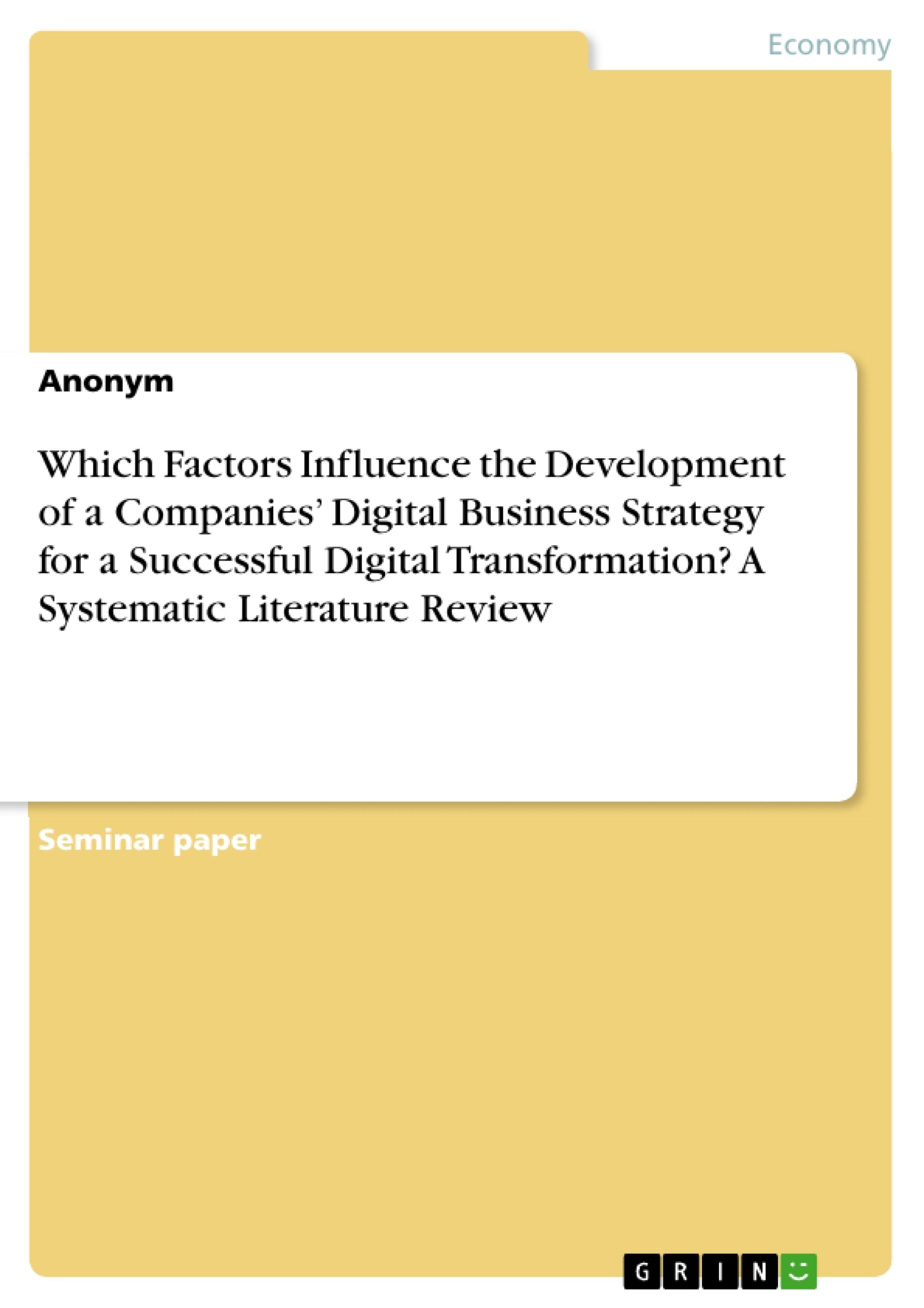New technologies and a permanently changing environment constantly confront companies with the challenge of adapting to new customer needs, disruptive innovation, and new competitors to survive on the market in the long term. For this purpose, the literature proposes the use of a digital business strategy (DBS) as an independent business strategy for the digital age, uniting IT strategy and business-level strategy, which have been considered separately until the advent of DBS.
By using the method of a systematic literature review, this paper has analyzed 33 relevant publications and identified critical internal and external factors to be considered in the process of development of a company’s DBS to ensure a successful digital transformation of the company. Furthermore, the findings were embedded in a conceptual model. In doing so, this paper contributes to the further development of previous research on the digital transformation of companies and places the development of DBS in its context.
Inhaltsverzeichnis (Table of Contents)
- 1 Introduction
- 2 Theoretical Basis
- 2.1 Traditional view on business-level strategy
- 2.2 The role of IT strategy
- 2.3 The emergence of digital business strategy
- 3 Review Methodology
- 4 Findings
- 4.1 Internal factors influencing DBS
- 4.2 External factors influencing DBS
- 5 Discussion
Zielsetzung und Themenschwerpunkte (Objectives and Key Themes)
This paper aims to explore the factors influencing the development of a company's digital business strategy (DBS) for a successful digital transformation. Through a systematic literature review of 33 publications, the study identifies key internal and external factors that contribute to the creation of a robust DBS.
- The relationship between traditional business-level strategy and the evolving role of IT strategy in the digital age.
- The emergence and significance of digital business strategy (DBS) as a distinct strategy for the digital era.
- Internal factors influencing the development of a company's DBS.
- External factors impacting the development of a company's DBS.
- The conceptual model of digital business strategy integration in the digital transformation process.
Zusammenfassung der Kapitel (Chapter Summaries)
The first chapter introduces the research topic and its significance in the context of a constantly changing environment characterized by new technologies, disruptive innovation, and evolving customer needs. The second chapter delves into the theoretical basis of digital business strategy, examining the traditional view on business-level strategy, the role of IT strategy, and the emergence of DBS as a unique strategic approach for the digital age. The third chapter outlines the methodology employed for the systematic literature review, laying the foundation for the analysis of 33 relevant publications. The fourth chapter presents the findings of the review, identifying both internal and external factors that influence the development of a company's DBS. Finally, the fifth chapter discusses the implications of the findings and how the conceptual model of DBS integration in the digital transformation process contributes to the understanding of companies' digital transformation journeys.
Schlüsselwörter (Keywords)
The main keywords and focus topics include digital business strategy, digital transformation, internal and external factors, IT strategy, business-level strategy, systematic literature review, conceptual model, and successful digital transformation. These terms encapsulate the core concepts and research focus of this work, aiming to shed light on the critical elements influencing the development of a company's digital business strategy for a successful digital transformation.
- Quote paper
- Anonym (Author), 2022, Which Factors Influence the Development of a Companies’ Digital Business Strategy for a Successful Digital Transformation? A Systematic Literature Review, Munich, GRIN Verlag, https://www.grin.com/document/1276245



